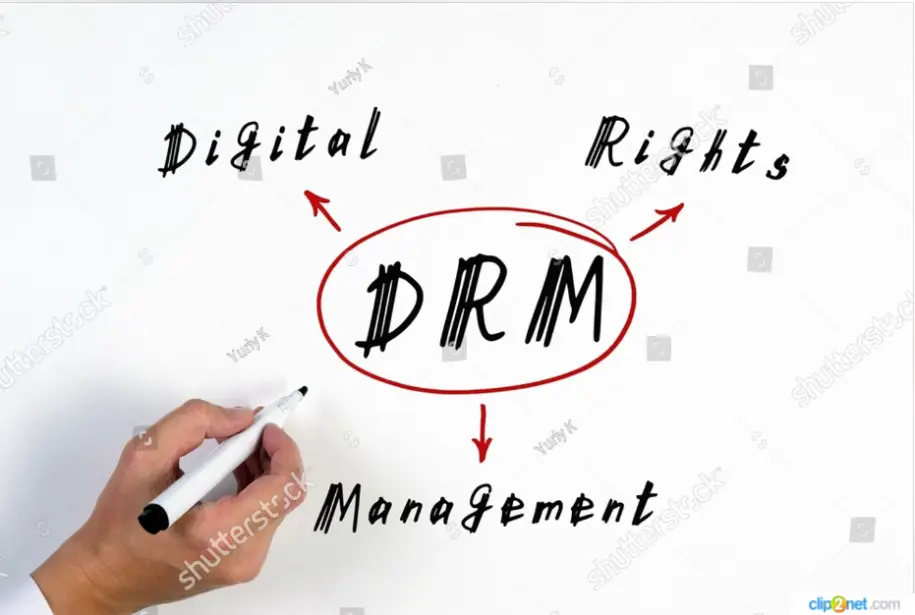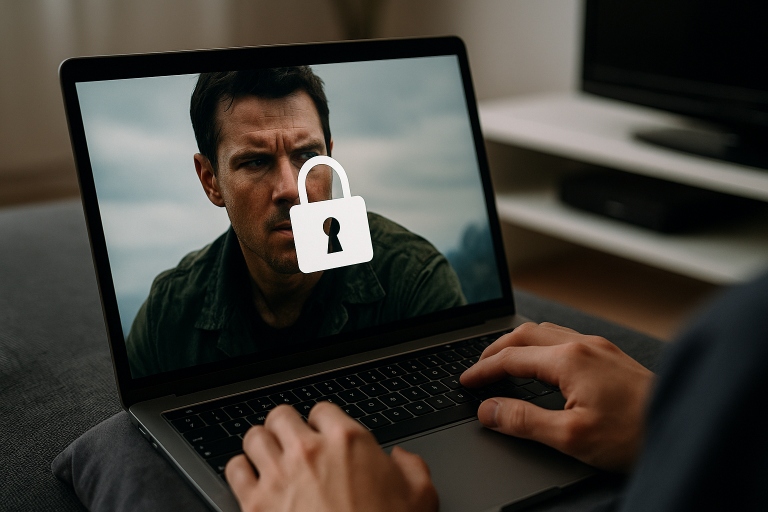Table of Contents
ToggleWhat is Widevine DRM, and why do top platforms trust it to protect their content? Discover how this powerful digital rights management tool stops piracy and secures premium video streams.
Key Takeaways: Widevine DRM at a Glance
Essential for Secure Streaming: Widevine DRM is the industry standard for protecting premium video content across browsers, devices, and protocols, making it indispensable for OTT, e-learning, and streaming services.
Three-Tier Security Model: Content access is gated by device security levels—L1 enables HD/UHD playback via hardware protection, while L3 restricts playback to SD due to software-only defenses.
Seamless Content Protection: Widevine uses encrypted delivery, secure license acquisition, and hardware-assisted decryption to ensure content remains protected milliseconds before display.
Adaptive Streaming Integration: It secures every quality tier (SD to 4K) in real-time, aligning video resolution with both user bandwidth and device security level to prevent piracy.
Revenue & IP Shield: By blocking unauthorized sharing and screen capture, Widevine preserves licensing agreements and ensures content creators and platforms maximize financial returns.
Universal Industry Adoption: Major players like Netflix, Disney+, Amazon Prime Video, and YouTube rely on Widevine to enforce digital rights and protect billions in media investments.
What is Widevine DRM?
Widevine DRM is Google’s industry-standard digital rights management (DRM) technology, designed to combat illegal downloads and video piracy. It secures premium content across:
Browsers: Chrome, Firefox, Edge
Devices: Android, Chromecast
Streaming Protocols: MPEG-DASH and HLS
For OTT and e-learning platforms, Widevine DRM is essential. It actively:Blocks unauthorized content sharing
Shields intellectual property
Safeguards revenue streams
By preventing piracy, this silent guardian ensures creators and distributors maximize their financial returns while protecting digital investments.
Why is Widevine DRM Essential?
Top streaming platforms—including Amazon Prime Video, BBC, Netflix, Disney+, and Spotify—depend on Widevine DRM to secure premium content. A key tradeoff exists: some smartphones limit playback to 480p resolution. This restriction reinforces DRM’s core purpose—blocking illegal video copying and redistribution.
For these services, Widevine delivers critical:
Piracy Prevention: Stopping unauthorized content leaks
Business Protection: Safeguarding subscription revenue
Platform Control: Enforcing copyright rules
Yet, DRM faces fragmentation challenges:
Device Silos: Inconsistent implementation across desktop, mobile, and OTT
Evolving Threats: New devices and piracy tactics demanding constant updates
HTML5 Complexity: Modern video formats requiring adaptable DRM solutions
This fractured landscape makes unified content security an ongoing priority for creators and distributors.
What Does Widevine DRM Do?
Widevine DRM is the content security backbone for top streaming platforms worldwide, including:
As Google’s premier digital rights management (DRM) solution, it:
Blocks unauthorized access to premium content
Prevents illegal redistribution of movies, shows, and multimedia
Protects billions in intellectual property investments
For these industry leaders, Widevine isn’t just technology—it’s a revenue-shield strategy.
It actively combats digital piracy, ensuring:
- Content creators recover production costs
- Distributors maintain subscription revenue
- Premium entertainment remains economically viable
In today’s piracy-prone landscape, this protection is non-negotiable for sustainable content ecosystems.
Understanding Digital Rights Management (DRM)
Digital Rights Management (DRM) is the essential security framework protecting digital content from piracy and unauthorized access. As streaming platforms deliver more premium content online, DRM has become non-negotiable for video services.
Here’s how DRM works:
Encryption: Videos are encrypted before streaming, often using multiple DRM systems (like Widevine) for device compatibility.
License Request: When playback starts, the player requests a decryption key from a license server.
Authorization: The server verifies the user/device has valid access rights.
Decryption: Approved requests receive a key to unlock and play content.
How Google Widevine DRM Works
When you click “play,” Widevine DRM executes a secure handshake between the Content Decryption Module (CDM) and license server, managed by your HTML5 video player. Crucially, the player never accesses decrypted content—it only facilitates encrypted data transfers.
Here’s the technical process:
Encrypted Video Delivery:
CDN delivers encrypted video to your browser
Media engine detects encryption and extracts initialization data (
initData)initDatasent to the video player
License Acquisition:
Player sends
initDatato CDMCDM generates license request → player → Widevine license server
The server validates device/user rights → issues encrypted license → player → CDM
Decryption & Playback:
CDM’s OEMCrypto module decrypts content
Decrypted video streams to players in segments
Viewer enjoys seamless playback with zero visible security steps
This end-to-end encryption ensures content remains protected until milliseconds before display.
Widevine DRM Security Levels: L1 vs L2 vs L3 Explained
Google’s Widevine DRM uses three security tiers to protect premium video content across devices. Each level balances hardware/software capabilities with piracy prevention:
L1 (Highest Security)
Hardware: Trusted Execution Environment (TEE)
Process: Decryption → Decoding → Playback all occur inside TEE
Content Access: Required for HD/4K streaming
Devices: Premium smartphones, smart TVs, streaming boxes
Key Benefit: Decrypted content never exposed to system memory
L2 (Intermediate Security)
Hardware: Partial TEE integration
Process: Cryptographic ops in TEE; video processing outside
Protection Level: Stronger than L3 but weaker than L1
Use Case: Rare, for specific legacy/niche devices
L3 (Basic Security)
Hardware: No TEE (software-only)
Process: Decryption in device CPU/browser
Content Access: SD-only playback
Devices: Budget smartphones, desktops
Why Security Levels Dictate Streaming Quality
Top platforms (Netflix, Disney+, Prime Video) enforce:
HD/UHD: Exclusively on L1 devices (blocks screen capture)
SD: Allowed on L3 devices
This tiered approach safeguards:Studio revenue from piracy
Intellectual property value
Premium content licensing agreements
Widevine DRM + Adaptive Streaming: Security Meets Quality
Adaptive bitrate streaming (ABR) dynamically optimizes video quality using real-time viewer data:
Internet speed
Device capabilities
Security level (L1/L3)
Powered by protocols like MPEG-DASH and HLS for buffer-free viewing.
Widevine’s ABR Integration
Google’s DRM seamlessly protects multi-resolution streaming:
Encrypts each video segment (SD/HD/UHD) individually
Maintains security across all quality tiers
The license server verifies device authorization before decryption
Security-Level Streaming Rules
Widevine enforces:
- HD/UHD access: Exclusively on L1-secured devices (hardware TEE)
- SD-only playback: For L3 devices (software-based security)
This prevents high-resolution piracy while honoring licensing agreements.
In an age where digital piracy threatens both revenue and creative ownership, Widevine DRM stands as a vital shield for premium video content. From Hollywood blockbusters to online courses, it ensures your content reaches only the right eyes—securely and reliably. For content creators, distributors, and platforms alike, DRM isn’t optional—it’s essential.
Ready to protect your content with industry-leading DRM?
Explore how Widevine can secure your streams and future-proof your platform—start your integration today.
FAQs
Widevine DRM encrypts your video streams and controls playback licenses, ensuring only authorized devices can play HD content securely without unauthorized copying or sharing.
Widevine uses L1, L2, and L3 security levels; only L1 devices with hardware security can stream HD or UHD, while L3 devices are limited to SD to prevent piracy.
Widevine encrypts each video segment independently, allowing secure adaptive streaming with MPEG-DASH or HLS, adjusting quality based on device security and network conditions.
Yes, you can set license rules for device restrictions, playback duration, concurrent streams, and geographic limits to protect your HD content and enforce business policies.
Devices with L3 security lack hardware-based protection, so Widevine restricts them to SD playback to prevent HD piracy on less secure platforms.
Widevine uses Trusted Execution Environments on Android to decrypt and decode video securely, disabling screen capture during playback on supported devices.
Widevine DRM supports Chrome, Firefox, and Edge on desktop, and Android devices including Chromecast and Android TV, with HD playback limited to L1-certified devices.
Widevine DRM uses strong encryption and hardware-based security on L1 devices to prevent unauthorized access and copying of premium HD videos.
L1 uses hardware security for full HD/UHD playback, while L3 is software-only and limits playback to SD quality to reduce piracy risks.
Encrypt your videos with CENC, set up a license server, and integrate DRM-enabled players like Shaka Player to manage secure playback across devices.
Yes, licenses can have expiration times and can be revoked to control access duration and prevent unauthorized sharing of HD content.
Widevine supports popular streaming protocols like MPEG-DASH and HLS, ensuring secure delivery and playback across compatible devices.


